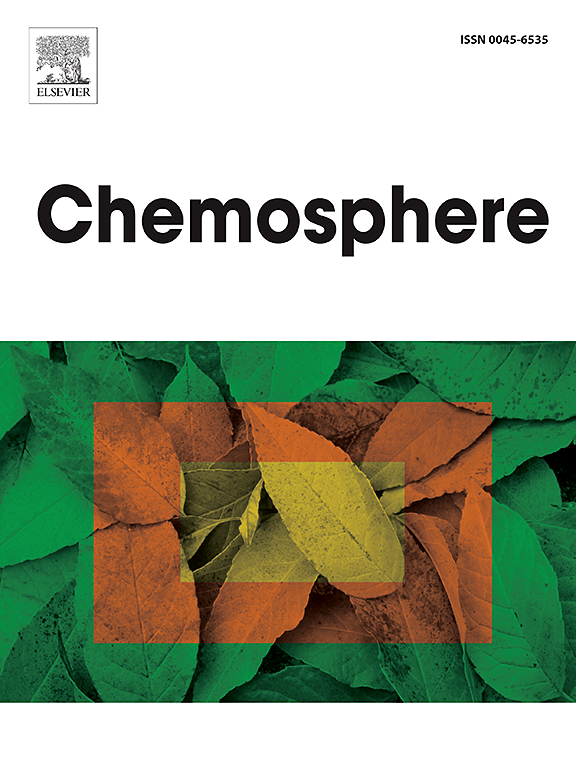Fish skin for water quality assessment
IF 8.1
2区 环境科学与生态学
Q1 ENVIRONMENTAL SCIENCES
引用次数: 0
Abstract
Pollution and the resulting decline in water quality pose a serious issue for aquatic biodiversity. Therefore, biomonitoring strategies to assess water quality need to be improved. In this study, we evaluated the possible use of fish skin histology as biomarker to monitor the water quality. Five fish species (Salmo trutta, Anguilla anguilla, Leuciscus cephalus, Barbus barbus and Rutilus rubilio) were collected from 32 river sites in the Campania region (Southern Italy), located within/outside Natura 2000 network. Body Condition Factor (BCF), Epidermis Morphological Index (EMI), Mucous Cell Index (MCI), epidermis thickness, and mucous cell size were analyzed in relation to the river site Ecological Quality Class (EQC). Negative correlation between BCF and EQC was found for S. trutta and A. anguilla, while a positive correlation was observed for L. cephalus and B. barbus. Skin histological results highlighted positive correlation between EMI and EQC in S. trutta, A. anguilla, and R. rubilio, while positive correlation between MCI and EQC was observed in S. trutta, L. cephalus, B. barbus, and R. rubilio. Epidermis thickness was negatively correlated with EQC in S. trutta, L. cephalus, and B. barbus, and positively correlated in A. anguilla. Mucous cells size appeared negatively correlated with EQC in L. cephalus and R. rubilio and positively correlated in A. anguilla. The findings of this study indicate that skin histology could be a sensitive and useful biomarker to assess water quality, suggesting its integration in biomonitoring programs. Species-specific responses need to be considered to obtain a more reliable water quality assessment.

水质评价用鱼皮
污染及其导致的水质下降对水生生物多样性构成严重问题。因此,需要改进水质评价的生物监测策略。在本研究中,我们评估了使用鱼皮组织学作为生物标志物来监测水质的可能性。5种鱼类(Salmo trutta、Anguilla Anguilla、Leuciscus cephalus、Barbus Barbus和Rutilus rubilio)从位于意大利南部坎帕尼亚地区的32个河流地点采集,这些地点位于Natura 2000网络内外。分析了体况因子(BCF)、表皮形态指数(EMI)、黏液细胞指数(MCI)、表皮厚度和黏液细胞大小与河道生态质量等级(EQC)的关系。结果表明:trutta和a . anguilla的BCF与EQC呈负相关,而L. cephalus和B. barbus的BCF与EQC呈正相关。皮肤组织学结果显示,白背沙鼠、鳗鲡和红背沙鼠的EMI与EQC呈正相关,而白背沙鼠、头鳞沙鼠、barbus沙鼠和红背沙鼠的MCI与EQC呈正相关。表皮厚度与EQC呈显著负相关,而与鳗鲡呈显著正相关。黏液细胞大小与EQC呈负相关,而与鳗鲡呈正相关。本研究结果表明,皮肤组织学可以作为一种敏感和有用的生物标志物来评估水质,建议将其纳入生物监测计划。需要考虑特定物种的反应,以获得更可靠的水质评估。
本文章由计算机程序翻译,如有差异,请以英文原文为准。
求助全文
约1分钟内获得全文
求助全文
来源期刊

Chemosphere
环境科学-环境科学
CiteScore
15.80
自引率
8.00%
发文量
4975
审稿时长
3.4 months
期刊介绍:
Chemosphere, being an international multidisciplinary journal, is dedicated to publishing original communications and review articles on chemicals in the environment. The scope covers a wide range of topics, including the identification, quantification, behavior, fate, toxicology, treatment, and remediation of chemicals in the bio-, hydro-, litho-, and atmosphere, ensuring the broad dissemination of research in this field.
 求助内容:
求助内容: 应助结果提醒方式:
应助结果提醒方式:


